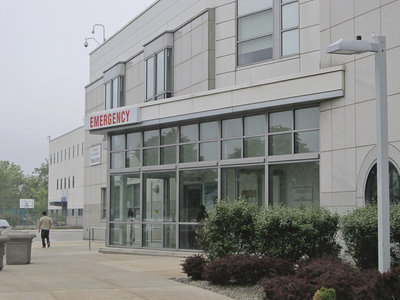When a call comes into Jersey City Medical Center’s 911 dispatchers reporting a drug overdose, the culprit is not always heroin these days – although Hudson County, like many places around the country, has seen the new and more potent varieties of the classic opiate. These days, with the variety of over the counter drugs, and the widespread misuse of prescription pain killers, calls might come from a rich neighborhood as easily as from a poor neighborhood.
Fortunately, an overdose does not have to mean death as it once often did. A change in state law and relatively new medical delivery devices have expanded the number of emergency personnel allowed to carry and administer drugs that counter the effects of overdoses and buy time for people on the verge of death.
Thanks to a change of law, EMTs and other trained public safety personnel can now administer the life-saving drugs.
Jersey City Medical Center’s (JCMC) Emergency Medical Services (EMS) unit has announced that it has approved a policy to allow its Emergency Medical Technicians (EMT) to administer the drug Naloxone, also known as Narcan, to individuals experiencing, or believed to be experiencing, opiate overdose.
Reversing an overdose
A person who overdoses on an opiate such as morphine, codeine, and heroin can have a reduced respiratory drive and stop breathing all together. Naloxone reverses the opiate’s effects and can restore the patient’s breathing almost immediately.
Naloxone blocks the opiate’s effect on the brain. Although previously administered via injection, EMTs carry syringes with no needle and instead use a device called a nasal atomizer that injects a mist into the patient’s nose.
JCMC EMS staff are trained to administer Naloxone via a Mucosal Atomization Device (MAD), allowing the medication to be sprayed directly into the nose instead of via injection.
All EMT ambulances that service Jersey City and paramedic units that service most of Hudson County, including Guttenberg, North Bergen, Secaucus, Union City, West New York, Weehawken, Hoboken, Jersey City and Bayonne, will carry the devices.
This is the first time EMS in Hudson County will be able to administer the drug. Previously, administration of Naloxone has been limited to JCMC EMS Advanced Life Support personnel.
Trained to look for physical signs of opiate use, EMTs will use Naloxone only in life-threatening situations, allowing the patient to step back from the edge of death to be transported for care to a local hospital.
Since JCMC has as many as 16 ambulance crews on duty at any given time as opposed the four to six paramedic units that were previously allowed to administer the drug, Naloxone will now be available to a wider portion of the population.
“Narcotic overdoses are a rising problem in our urban communities, across Hudson County, and throughout New Jersey,” said Steven Cohen, assistant director of EMS/Quality, Performance Improvement & Education at Jersey City Medical Center. “[Naloxone] is a tool that allows us to reduce the incidence of fatal overdoses. Jersey City Medical Center EMS is excited to be the first in Hudson County to add this life-saving medication to every EMT toolbox. This policy will allow for faster administration in the field, which will result in more lives being saved.”
Heroin use has become popular again, and thus the risk of overdose has also risen. But so has the misuse of prescription drugs that have the same ability to cause overdose. Unlike heroin, which can be difficult for people in some economic levels to obtain, prescription opiate drugs are often found in parent’s or family member’s medicine cabinets.
In the past, when EMTs arrived on a call of an opiate drug overdose, they had limited options, and in many cases the victim died. In the last few years, however, help administered at the scene can save the life.
Although Naloxone was developed in the early 1960s, the drug had not been widely available until the recent development of alternative delivery systems. In the past, Naloxone had to be injected directly into a vein, which required specific medical training. Recently, new delivery devices such as those used for delivery of drugs for diabetics have made the drug more easily available. The spray system JCMC is using, however, is the least complicated and most easily administered.
Al Sullivan may be reached at asullivan@hudsonreporter.com.
